All photos taken (by me) in January 2025
January, as I am not the first to note, has a tendency to be interminable. But the calm after the holidays and (mostly) blue skies means it’s a super time to visit Rome. It’s also a super time to visit Naples and environs which is how I spent a week with a group from Learn Italy, a small UK-based company specialising in thoughtful trips across Italy.
If you’d like to contact them for information I’ll be guiding and lecturing on a Learn Italy trip centred on Piero della Francesca from 26 Sept-2 Oct this year. Lovely paintings, beautiful countryside, excellent food: what’s not to like? We’ll be based in Città di Castello and last I heard there were still a couple of spaces open so drop them a line if you’re interested in finding out more.
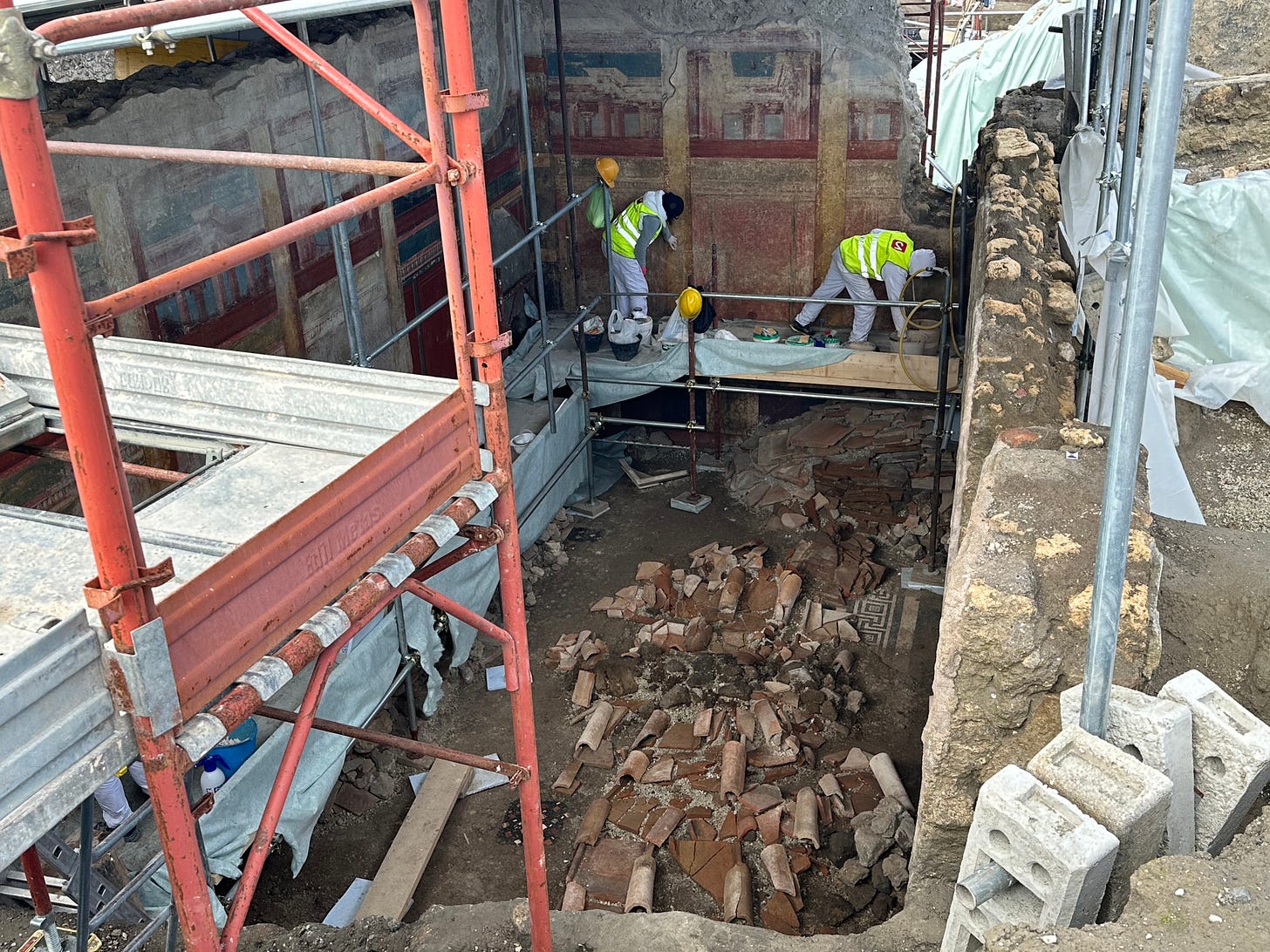
On our Neapolitan jaunt we spent a day at Pompeii, meandering from the Amphitheatre to the Villa of the Mysteries by way of a lunch break and an impromptu archeological Q&A with my pal Dr Sophie Hay (who currently features in this BBC doc about the newest discoveries, presently only available in the UK). If you haven’t been to Pompeii in recent years may I encourage a return, or a look at their excellent website and a take yourself on a virtual meander clicking on the sites in the map? So many houses have been opened and so much more is visitable than on my first visit over twenty years ago that it is quite a different experience.
As my charming charges and I wandered in the winter sun through deserted streets we compared two houses of which I am extremely fond and which contrast wonderfully: the House of the Silver Wedding and the House of the Vettii (which only reopened, restored, to the public in January 2023 after two decades behind locked gates).
On the north-eastern edge of the excavated area, the House of the Silver Wedding (its name is nothing to do with Pompeiians, but rather alludes to its excavation in 1893, the year of the twenty-fifth wedding anniversary of King Umberto I and Margherita of Savoy) is a grand domus dating to the second century BCE, but bearing decorations from the early first century CE. Aristocratic and antique at the time of the eruption, wall decorations of painted stucco in the atrium emulate coloured marbles and other stones.
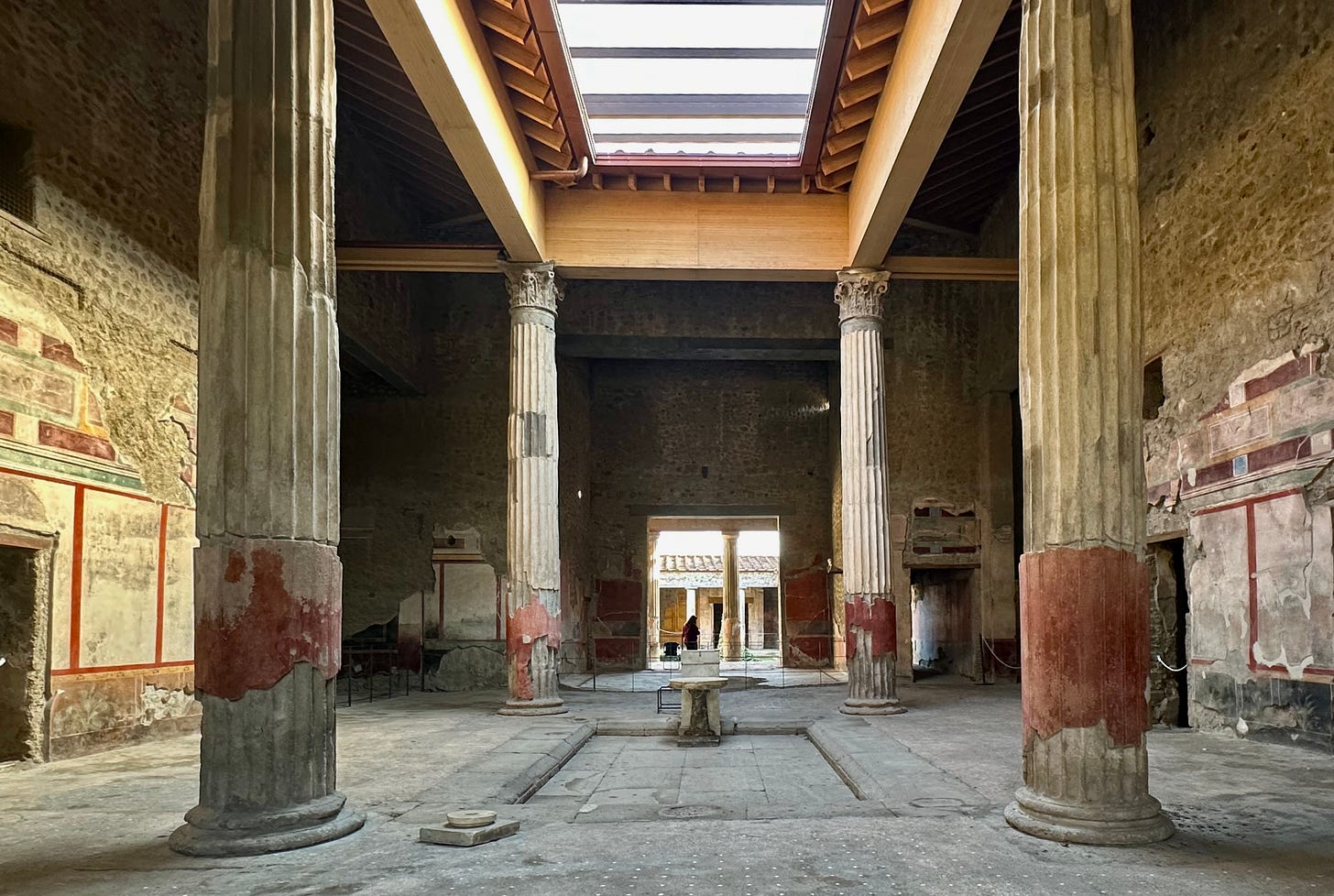
In the dining room columns plastered and painted to allude to Egyptian porphyry support a sort of masonry canopy—as if it were a room within a room—and paintings move away from the traditional evocation of marble cladding to more modern fresco decorations with painted columns and bracketed ledges three quarters of the way up the wall giving the illusion of space opening out beyond the room. The floor is a restrained black and white mosaic, the tiny size of the tiles quietly speaking of its quality.
The decorations can be seen as analogous to the House of Augustus on the Palatine Hill: wealthy Romans emulating Imperial style on a slight delay. There are also traces of the bases of an interior “canopy” in a ground floor fountain room at the house of Augustus.
Not far from the House of the Silver Wedding we find the joyous, raucous antithesis to such tight-lipped aristocratic restraint. The House of the Vettii greets its visitors with a bawdy painting of Priapus, weighing his, well, vast member. Fond as the Romans were of apotropaic phalluses (has there been a band called the Apotropaic Phalluses? If not, why not?) we can imagine this extravagant display of virility and wealth at the front door would have had the Silver Wedding folk wincing. From the quiet whispering of old money here we enter a glorious palace of bling.
The house was decorated in the wake of the earthquake which hit Pompeii in 62CE, a rumbling which who could have imagined would herald the cataclysm seventeen years later. It belonged to Aulus Vettius Conviva and Aulus Vettius Restitutus, freedmen who went all out to advertise the wealth they had built up.
Just off the atrium we see decorations both architectural and mythological, a more modern fusion of the type seen at Nero's Golden House, a distinct move away from Augustan restraint.
Here Pentheus, King of Thebes, is torn limb from limb by female followers of Dionysius in punishment for his imprisonment of the god while on either side elaborate architectural decorations are realised with exquisite detail and fine perspective.
Joyful details abound in the atrium, one of my favourites is a putto waterskiing on the back of crab, and beyond is an exquisite peristyle garden, carefully planted according to literary and archeological sources.
Off the garden a dining room offers, to my mind, some of the most delightful painted vignettes of all of Pompeii:
Here some rather Midsummer Night’s Dream fairies—Peaseblossom, Moth and Mustard seed, I’d hazard—gather petals;
another fairy whom I shall assume, anachronistically, to be Cobweb sits grumpily on an elegant stool while putti engage is some potion-mixing or suchlike;
determined putti bash metal into shape (perhaps?), below a refined peacock;
and, one of my favourites, gilded elephants (possibly painted by someone who’d never met an elephant) support a candelabrum.
I think we can safely say that the up-to-the-minute bling of the House of the Vettii will have been looked down upon by the Silver Wedding people, but I certainly know where I’d have preferred to go to a party.
Saluti from Roma,
Agnes

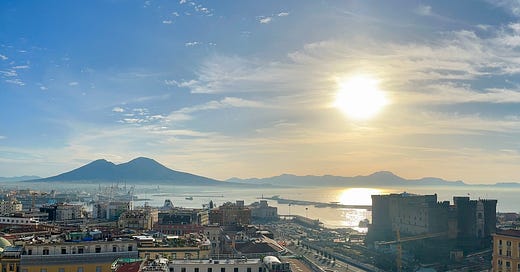



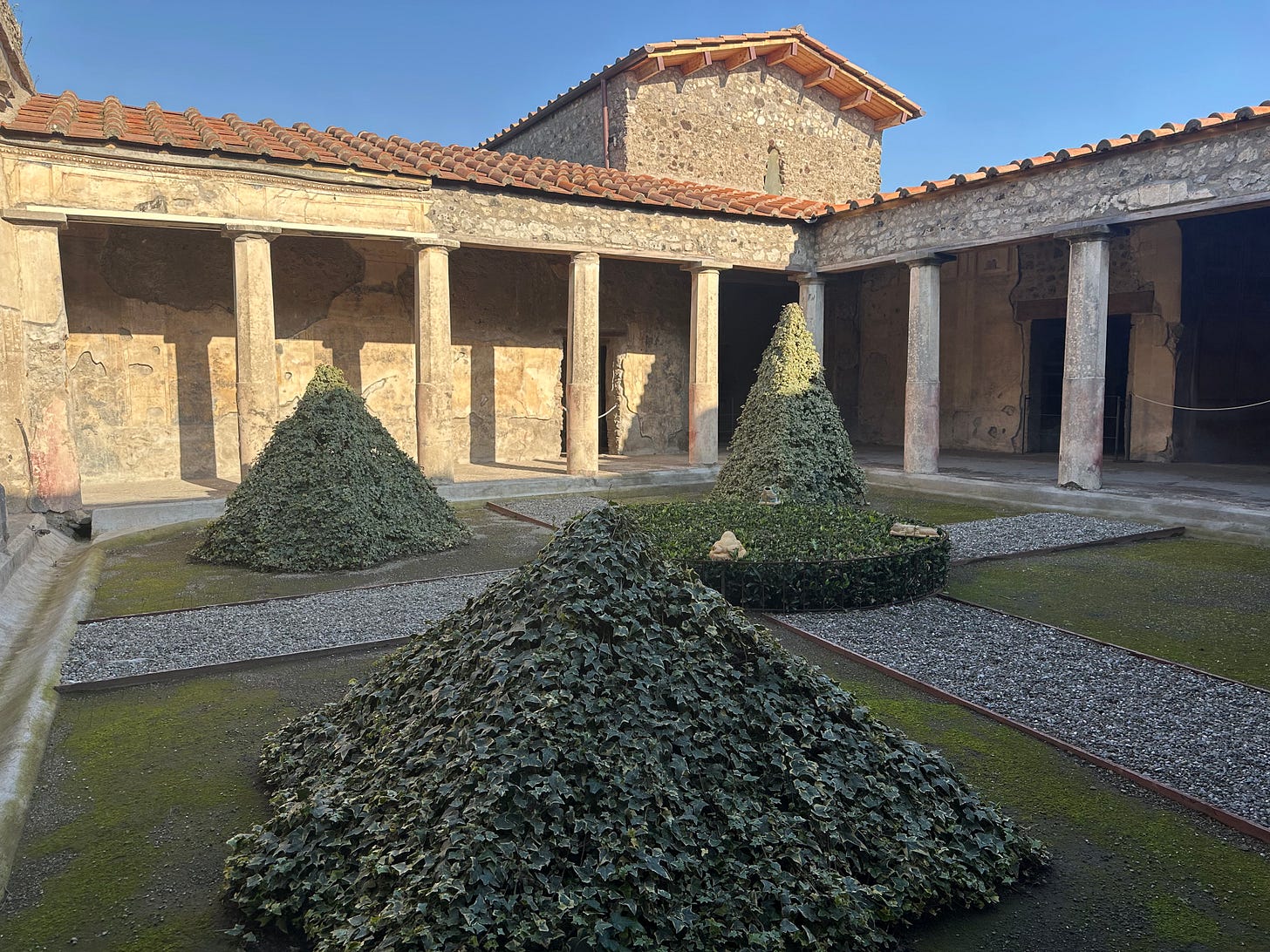
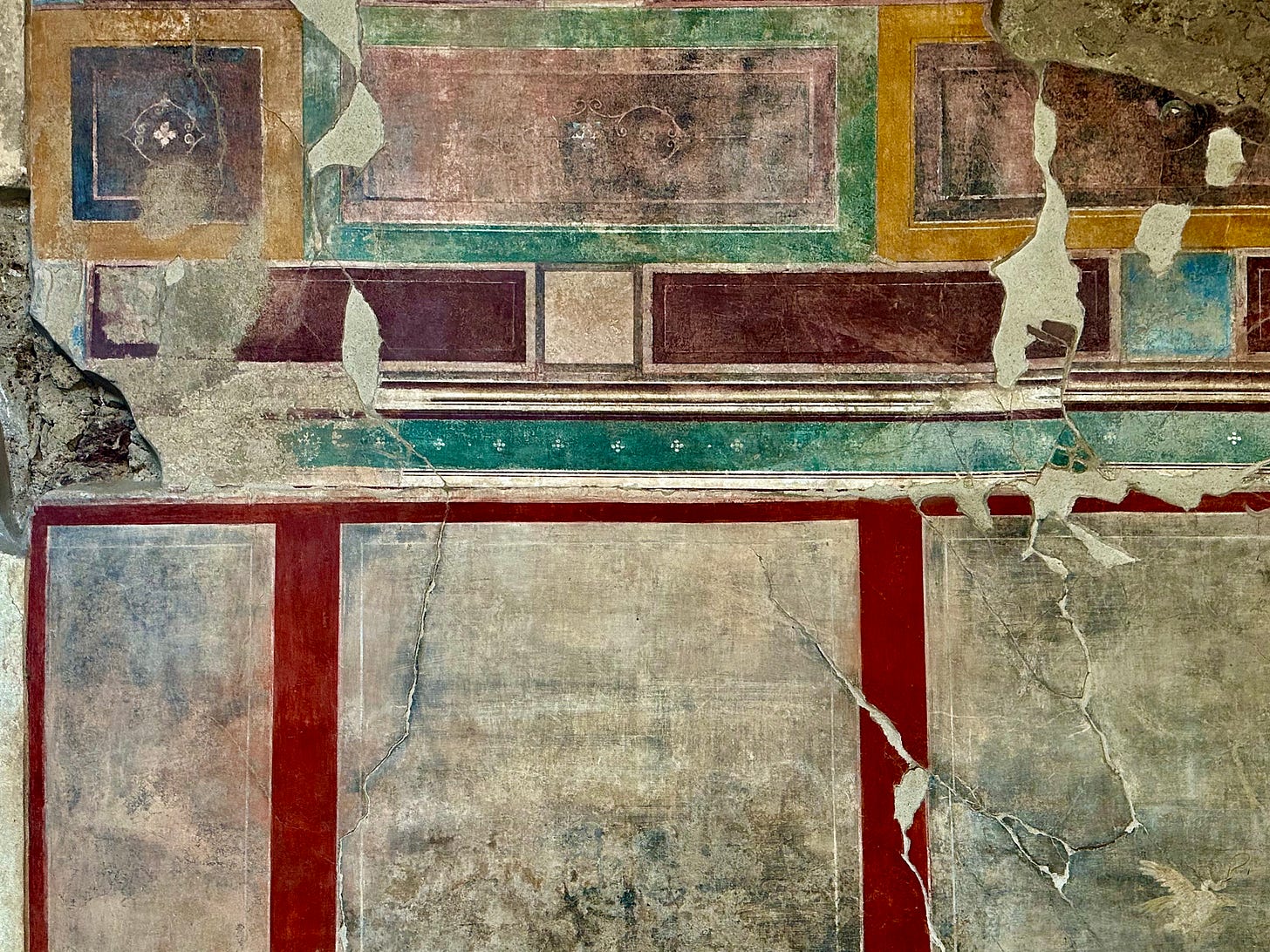
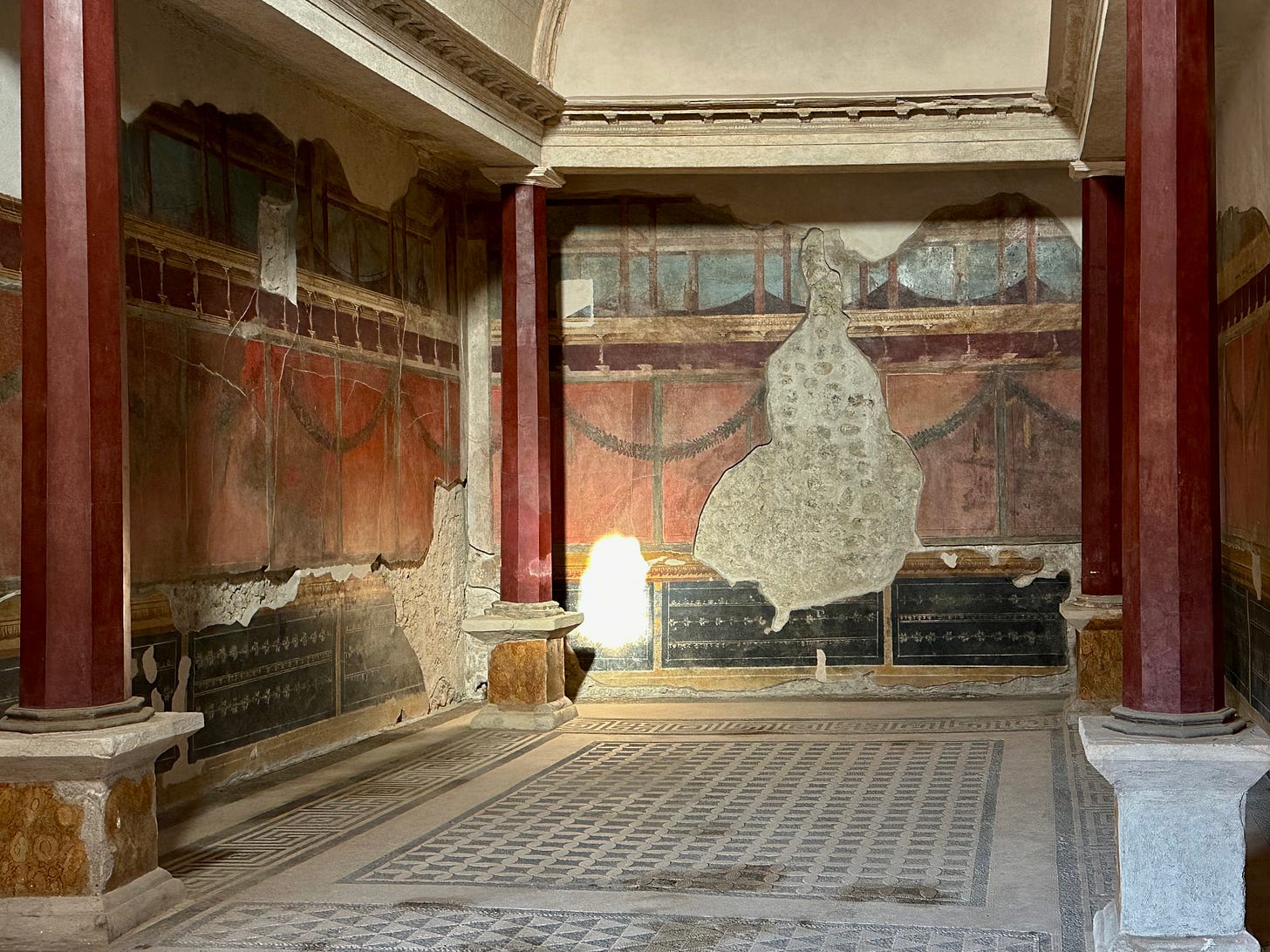
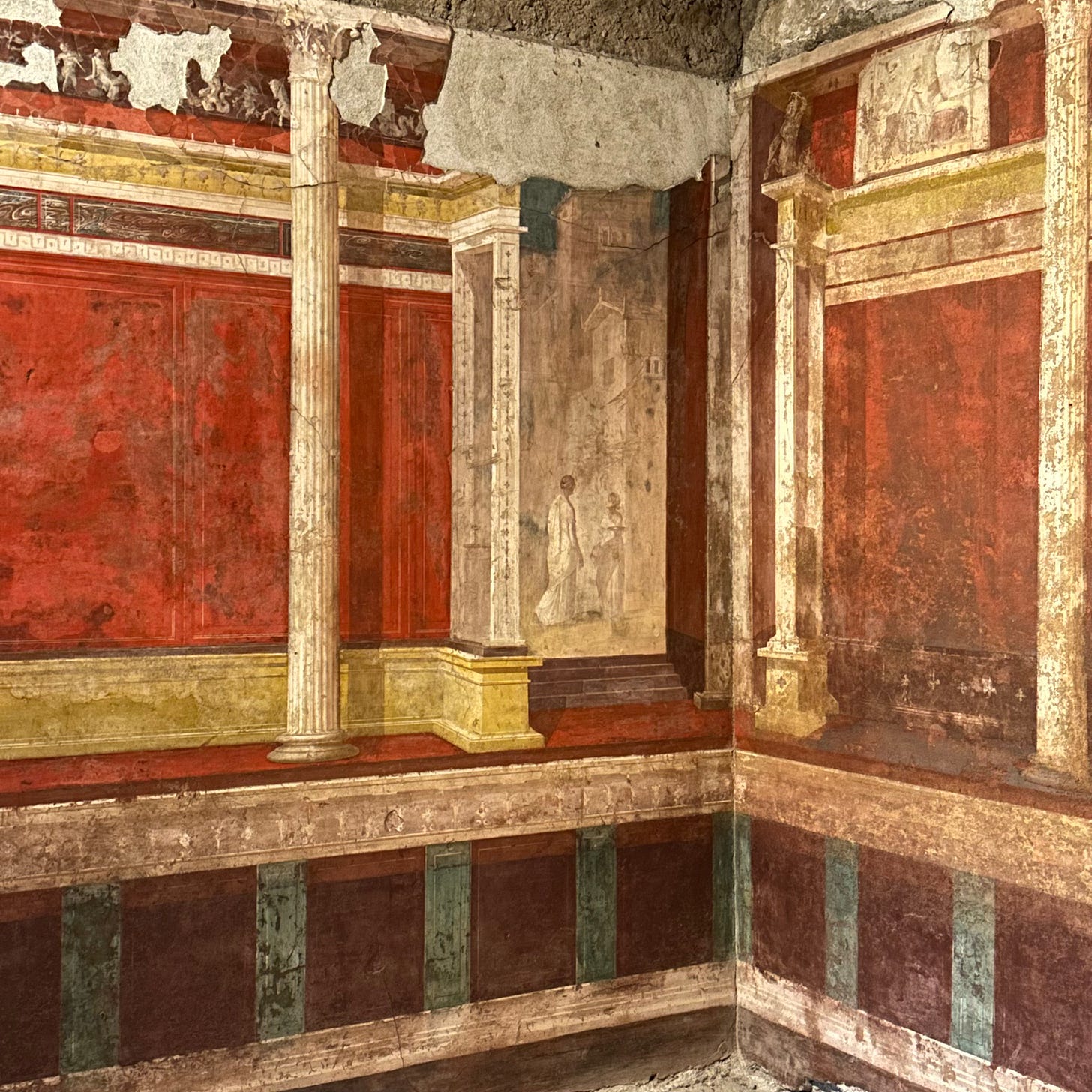

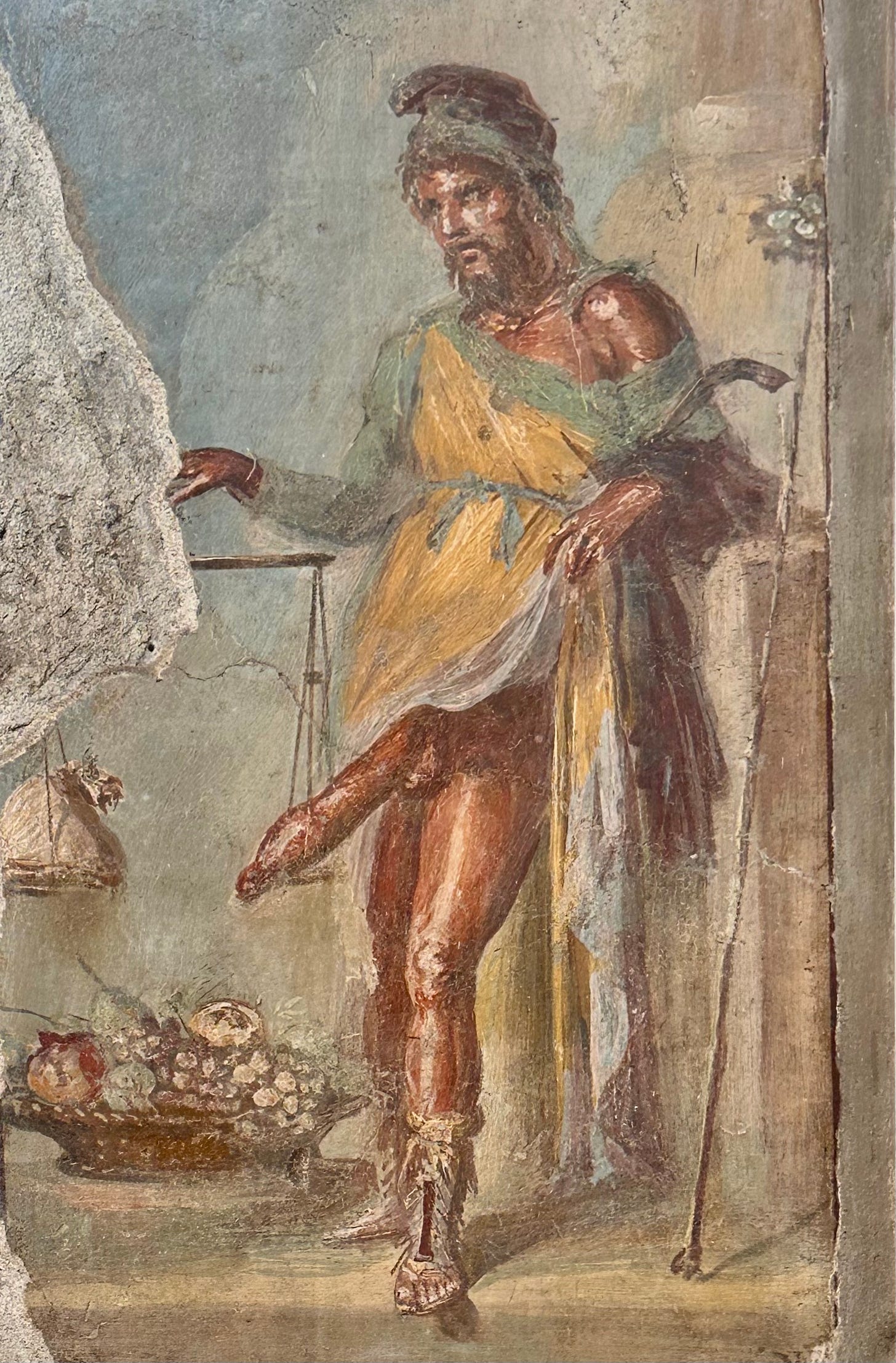
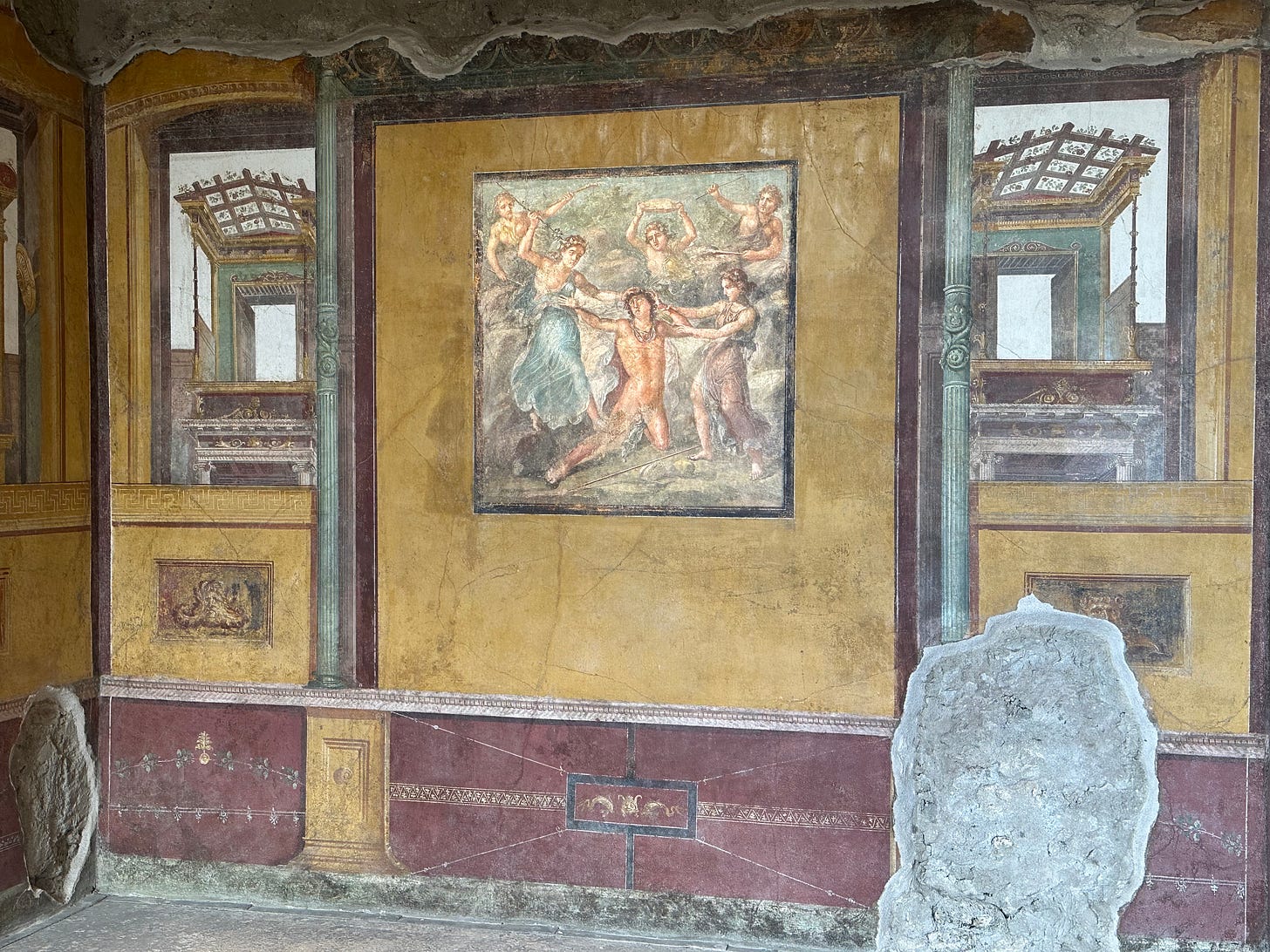

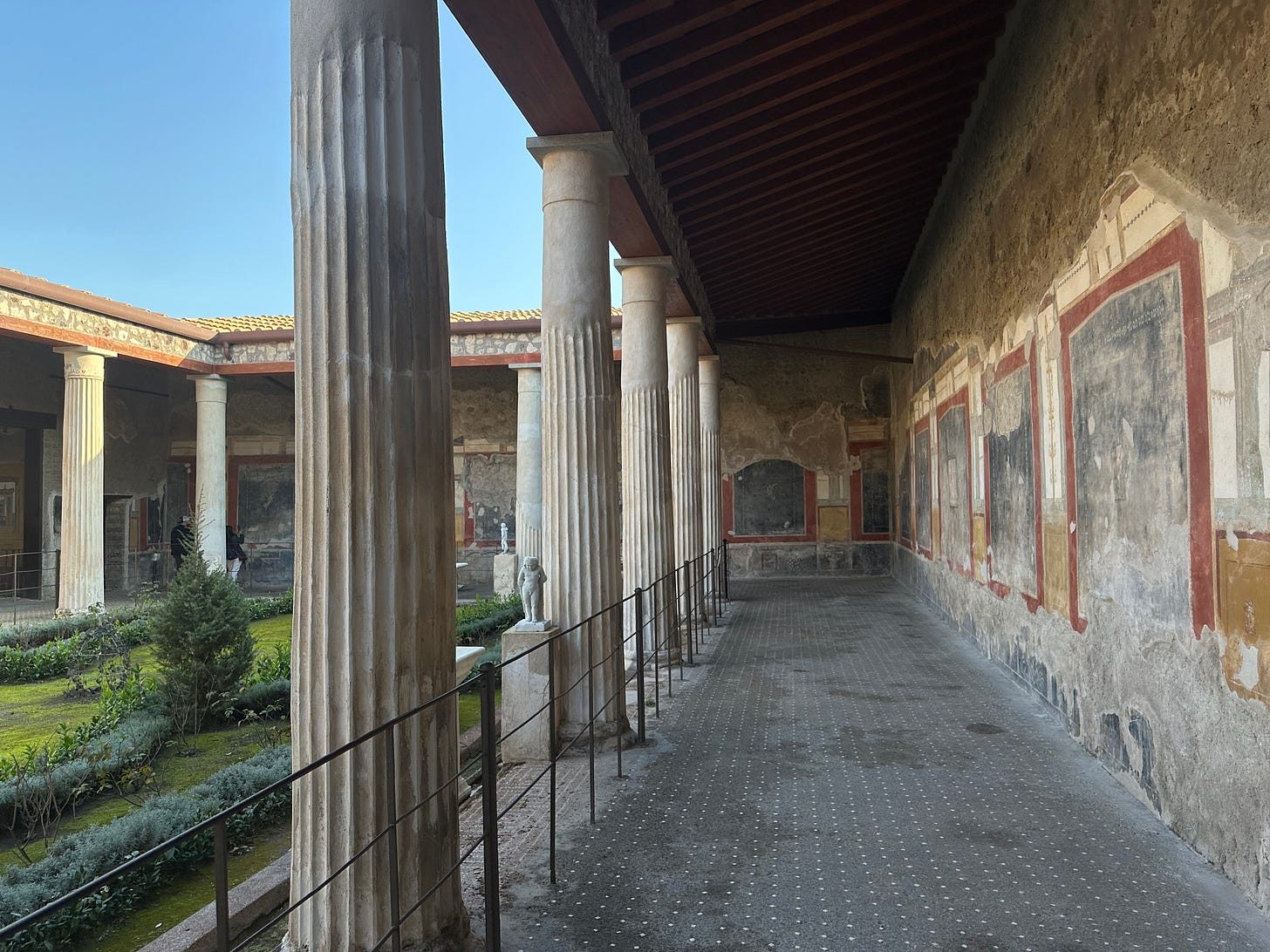
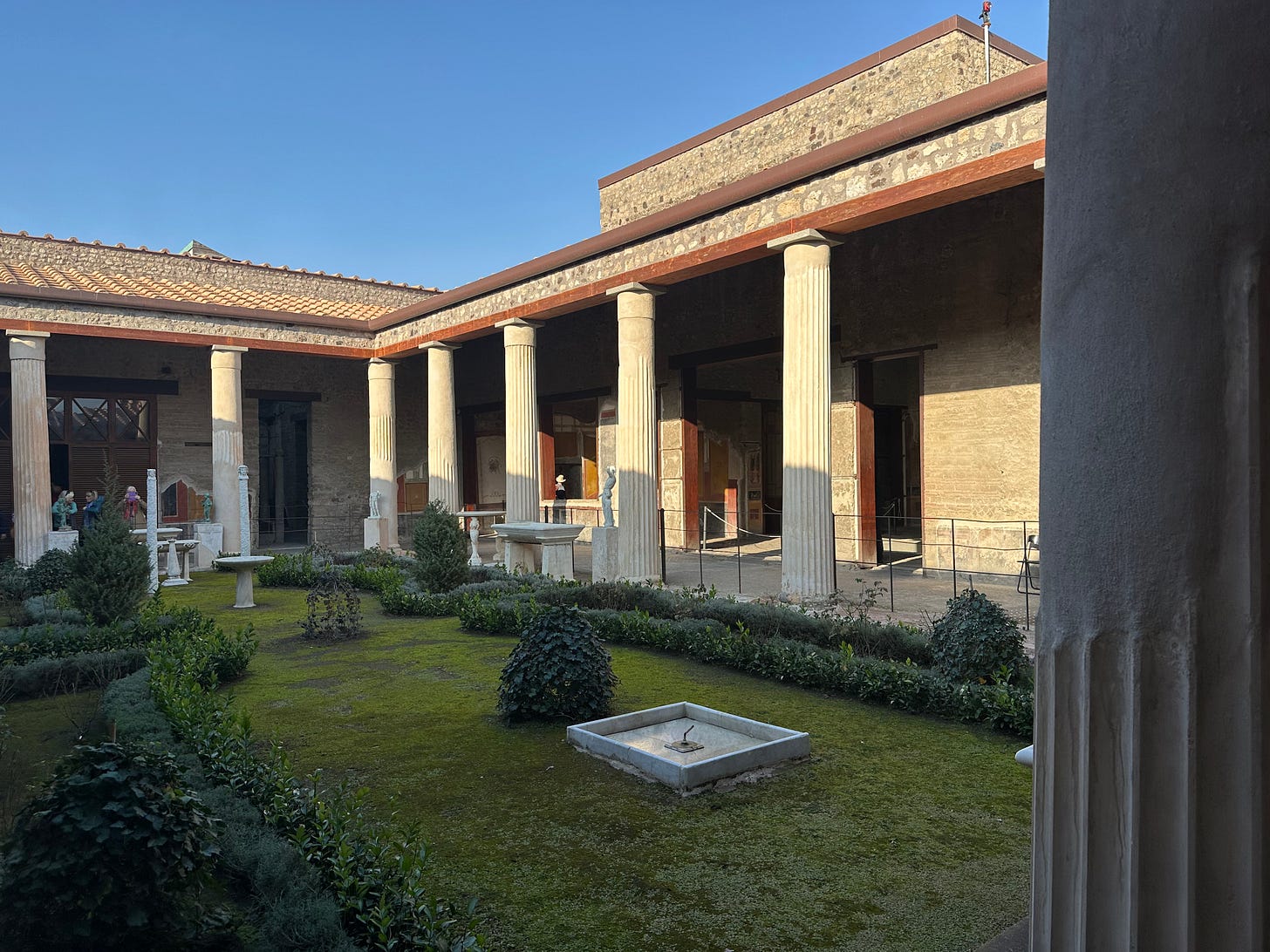
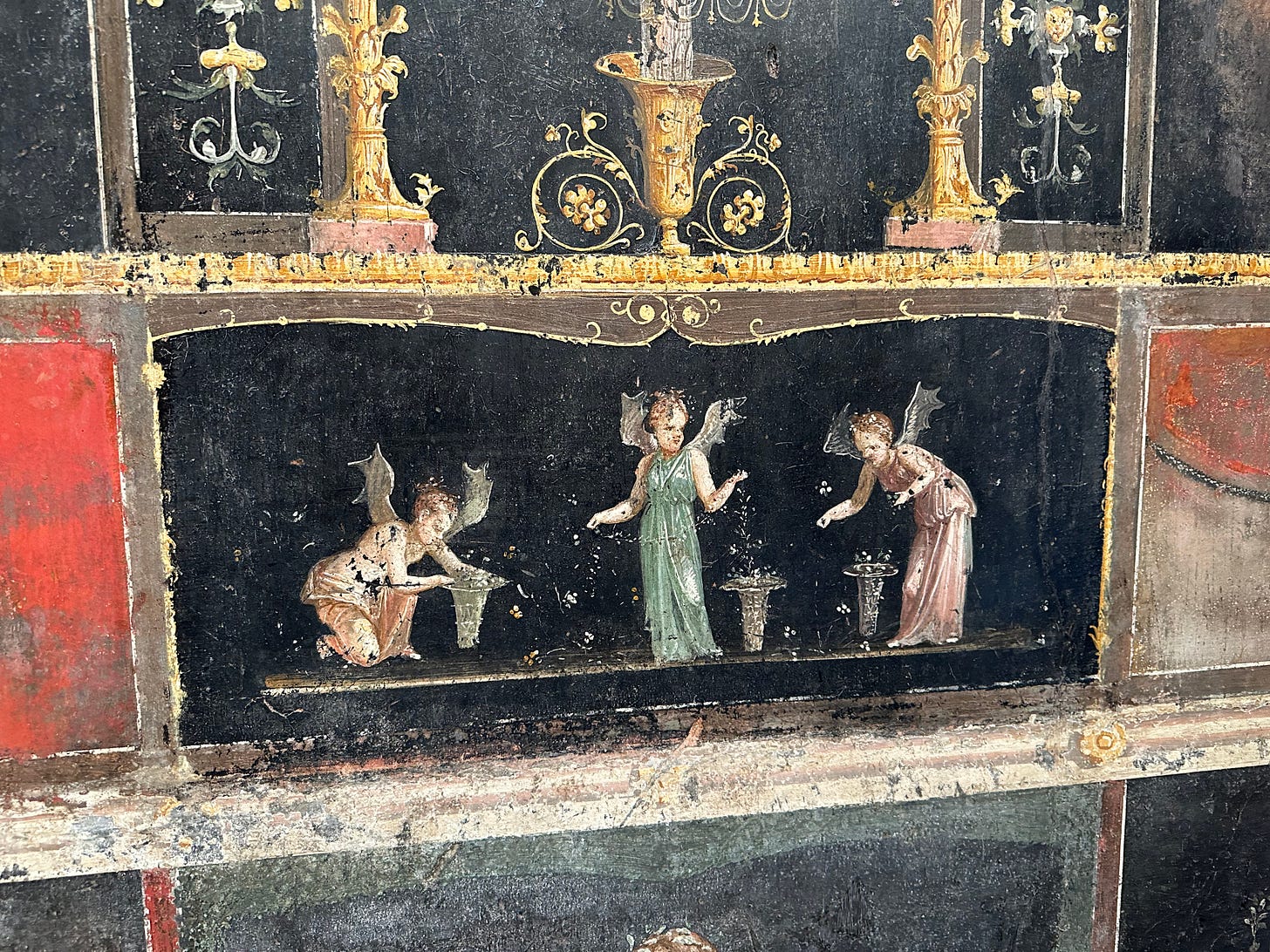
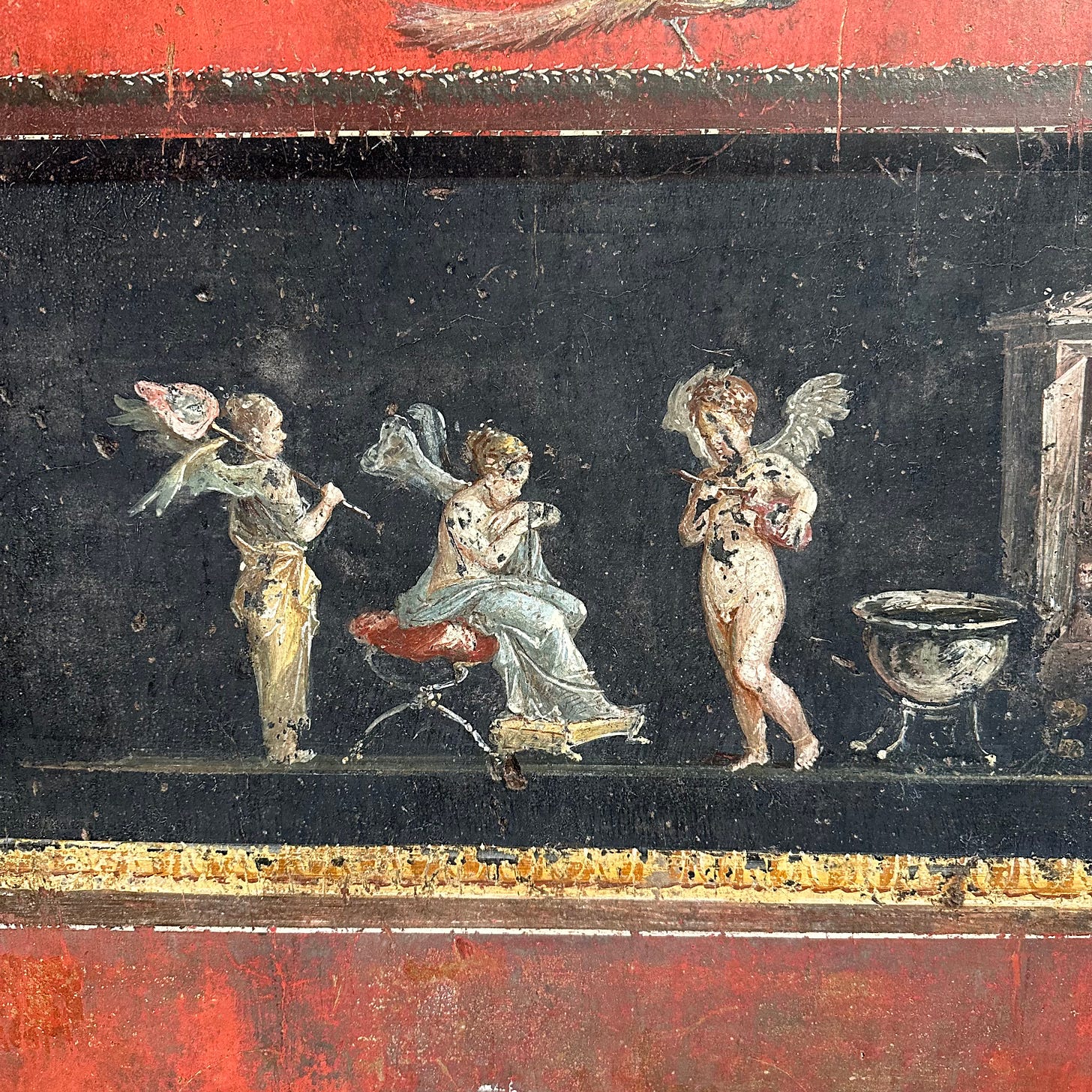
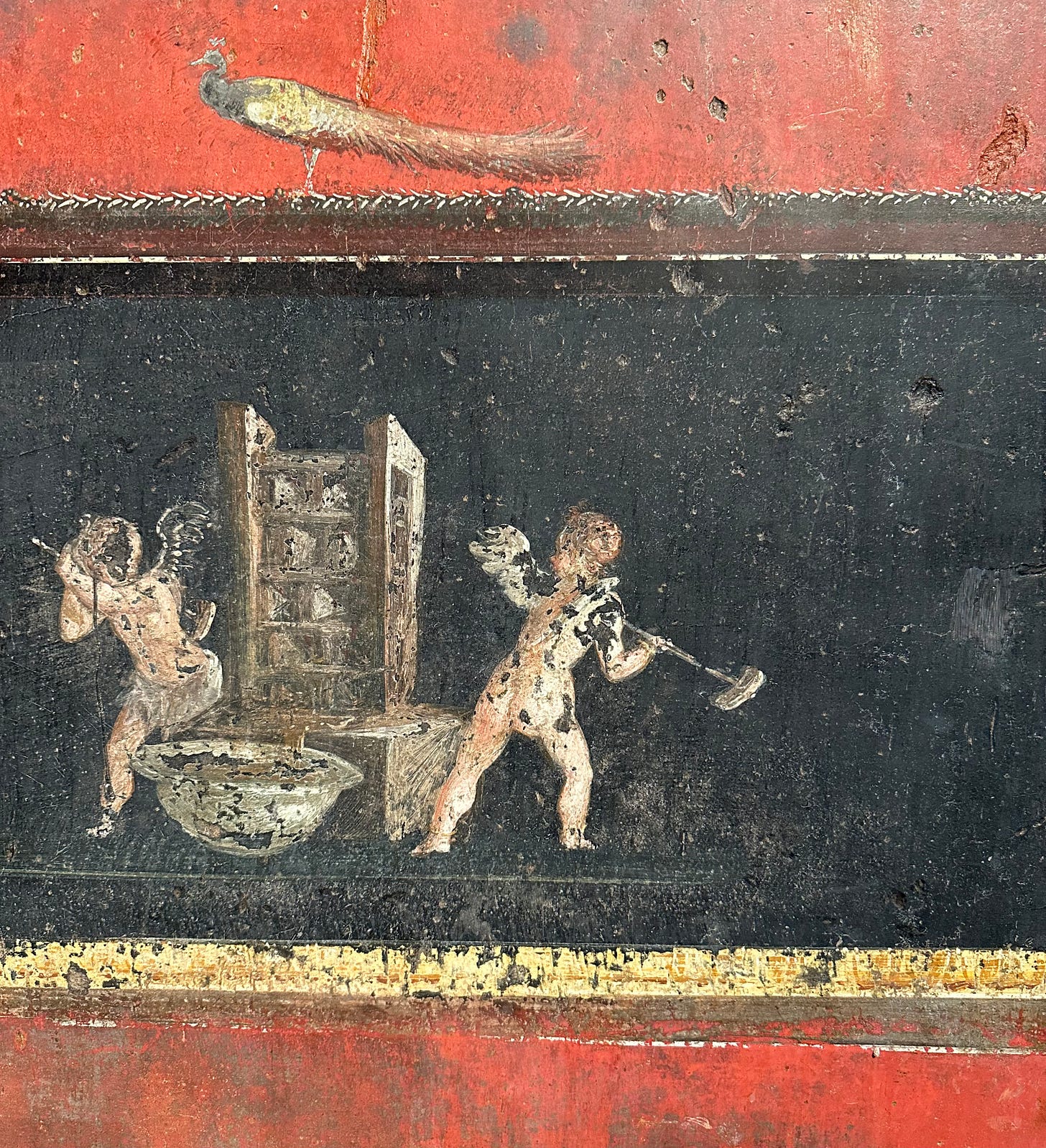
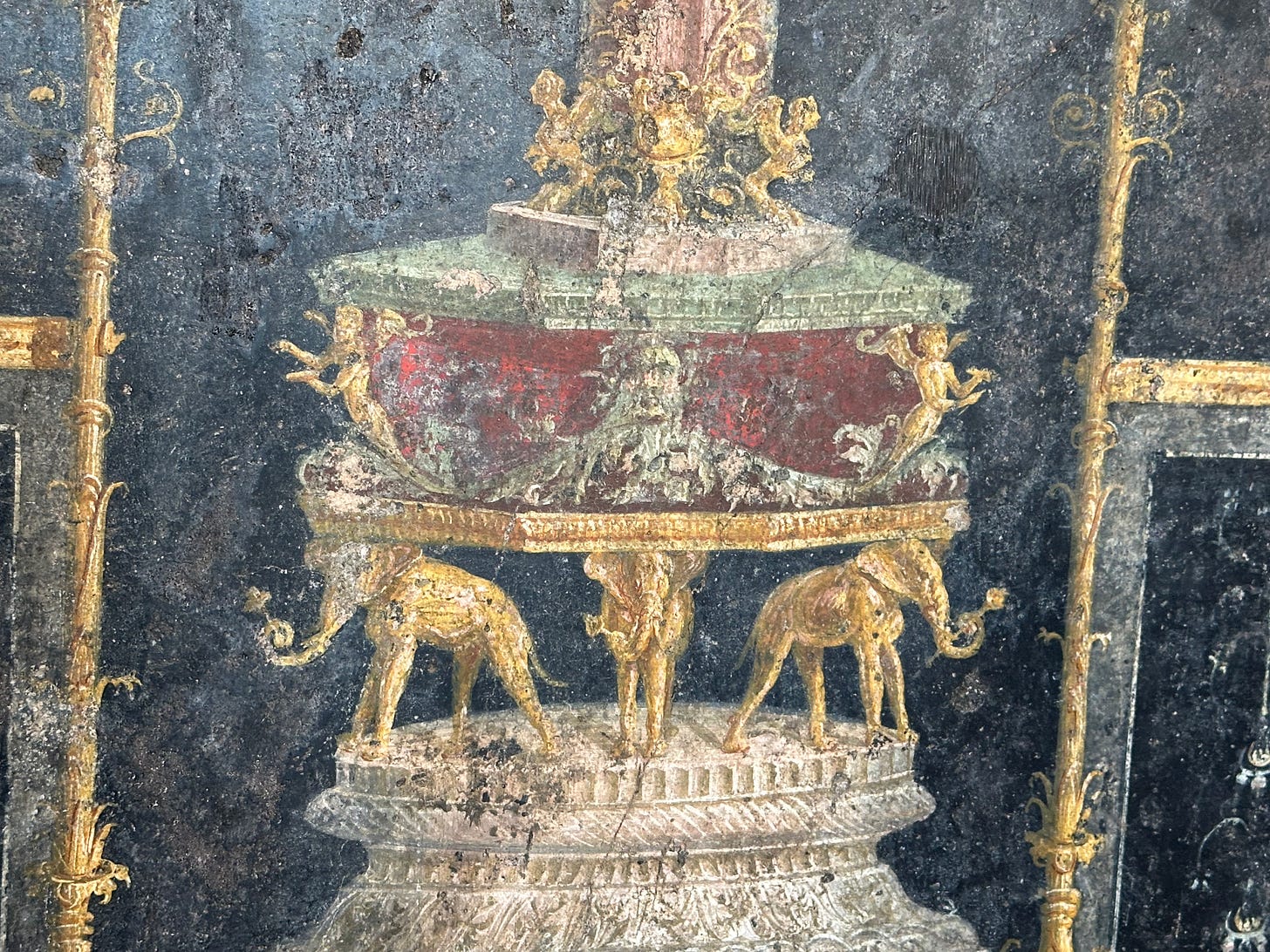
Thank you for this fabulous postcard and for sharing your photos of the whimsical putti! The putto waterskiing on the back of the crab made me laugh.
what a marvelous and informative post, thank you. I especially like the explanations about the adorable putti!